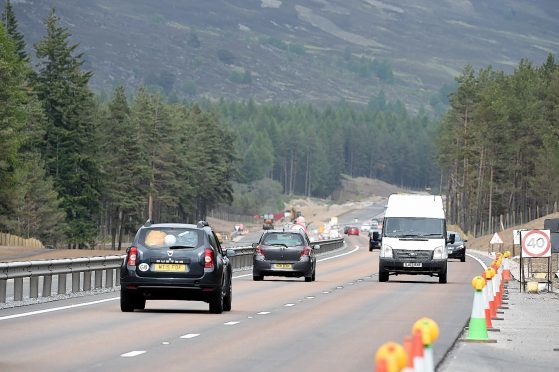Plans to transform the A9 into Scotland’s first “electric highway” have been revealed by the Scottish Government.
The road, which is the longest in Scotland, would have charging points installed along its length from central Scotland through Inverness and up to Scrabster Harbour in the far north.
Unveiling the move yesterday, First Minister Nicola Sturgeon said the road would demonstrate that electric vehicles offer important advantages to motorists in rural, as well as urban, Scotland.
She said: “Over the next few months we will set out detailed plans to massively expand the number of electric charging points in rural, urban and domestic settings.
“We will make the A9, already a major infrastructure project, Scotland’s first fully electric-enabled highway.
“This is an exciting challenge and one I hope all members and the whole country will get behind.
“It sends a message to the world – we look to the future with excitement, we welcome innovation and we want to lead it.”
The Climate Change Bill will also include phasing out the need for new petrol and diesel cars and vans, and promoting ultralow emission vehicles (ULEVs), by 2032.
The target is eight years earlier than one proposed by the UK Government.
This will be supported by expanding Scotland’s electric charging infrastructure between now and 2022 in rural, urban and domestic settings to give easy access to smart and rapid charge points.
The government also plans to transform public sector car and van fleets by the mid 2020s and commercial bus fleets by the early 2030s.
A Transport Scotland spokesman said: “The A9 already has a number of fast and rapid chargers at strategic locations.
“We recognise that as electric vehicle driver numbers increase so must our charge point numbers to ensure that drivers have the support and confidence to travel the country without experiencing ‘range anxiety’.
“To support our ambition of phasing out the need for petrol and diesel cars and vans by 2032, we will continue to work with each of our delivery partners to further develop the A9, making it Scotland’s first electric highway.”
Friends of the Earth Scotland director Richard Dixon welcomed the plans as “the greenest programme for government in the history of the Scottish Parliament”.
He said: “The Scottish Government has put improving and protecting the environment at the heart of their legislative and policy programme.
“Promises here will reduce climate change emissions, save people from air pollution and help Scotland become a leading example of a low carbon country. This package is a very significant step towards a fossil-free Scotland.”
Scottish Renewables deputy chief executive Jenny Hogan welcomed “recognition of the economic, environmental and social value of renewable energy”.
She said: “The announcement of £60million to deliver cutting-edge low-carbon energy infrastructure like electricity battery storage and sustainable heating systems will build on the success of projects already announced under the Low Carbon Infrastructure Transition Programme and further enable our shift to a cleaner, greener economy.
“A focus on ultra-low emission vehicles, and particularly a drive to encourage their uptake by public bodies, will help move our transport system to one powered increasingly by renewables.
“A new Climate Change Bill which will toughen Scotland’s statutory 2050 greenhouse gas emission target will provide a context for the further development of our industry, enabling renewables to continue to reduce emissions and drive sustainable economic growth.”










